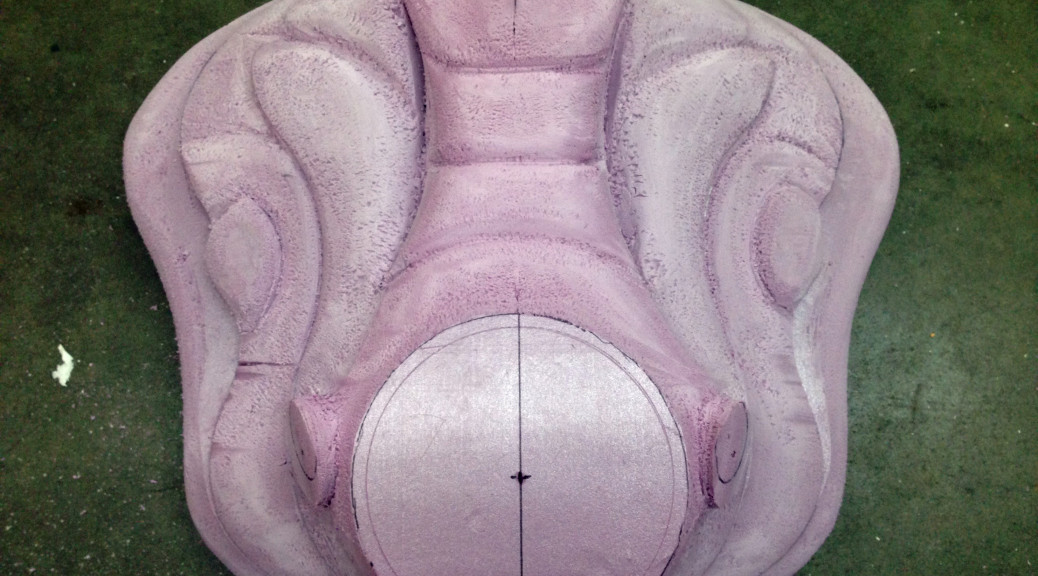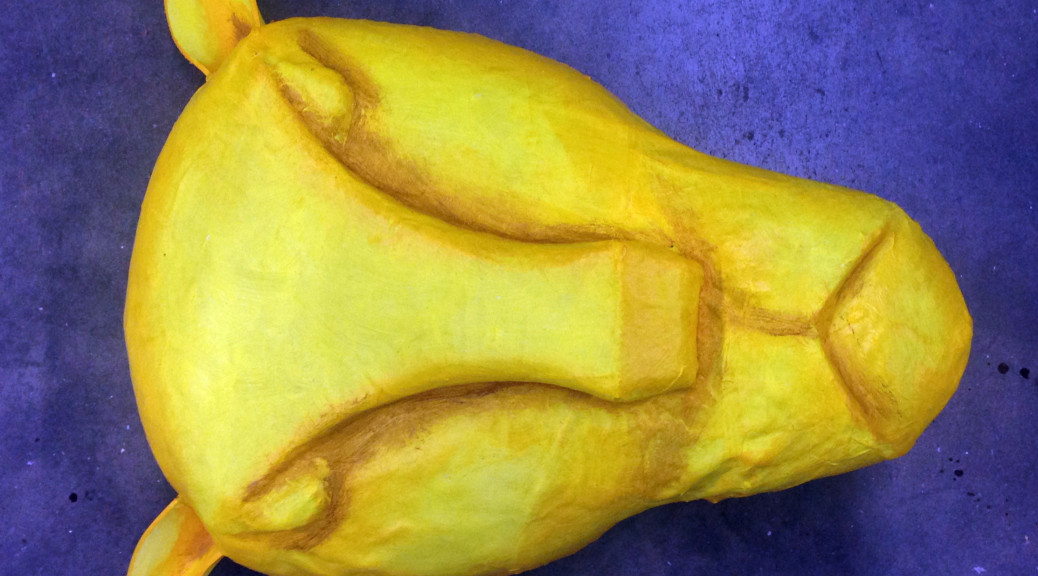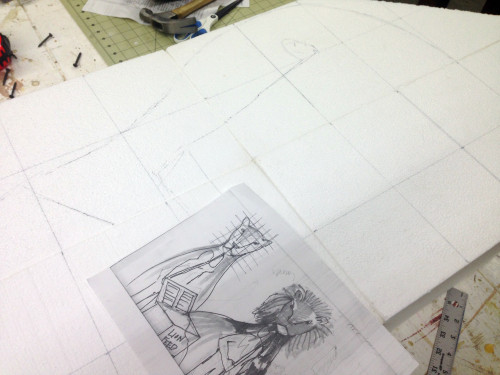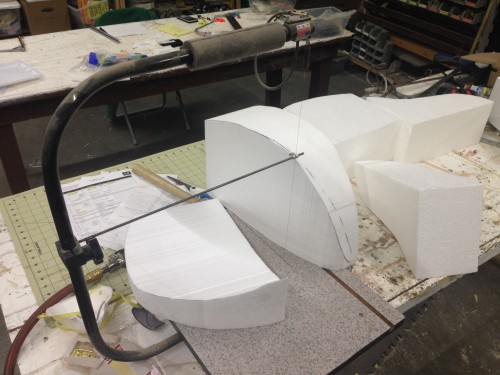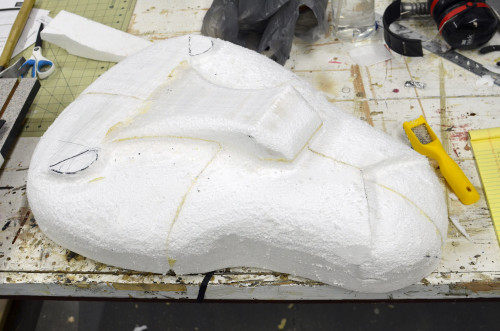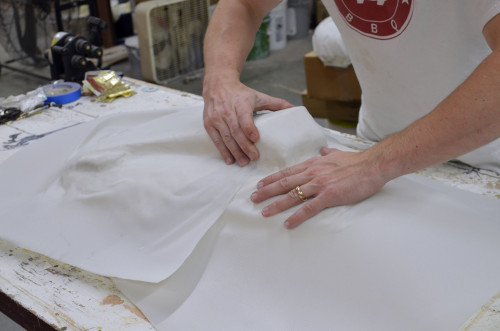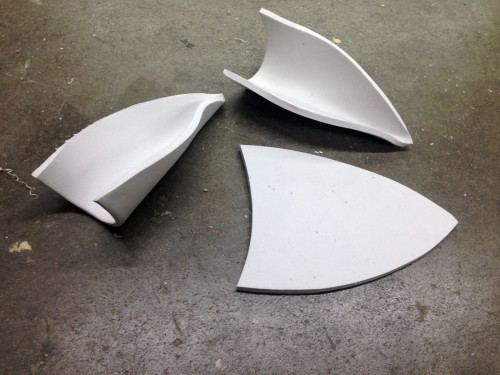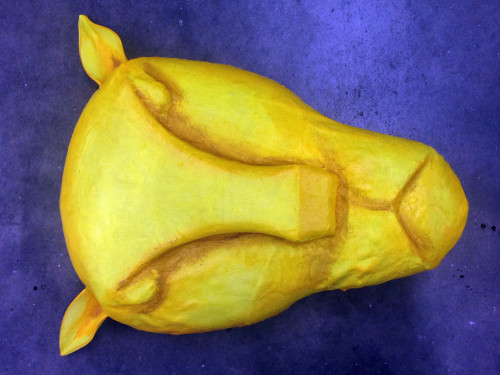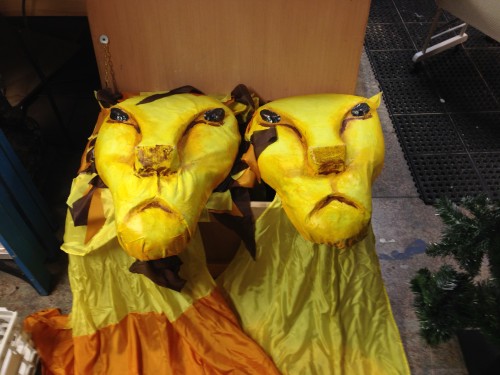Last week I showed you the Lion Puppets I made for Triad Stage’s Beautiful Star. Today you can see how the Elephant Puppets were done.
The idea was similar; they were designed to look like a giant papier-mache head with a flowing fabric body made of silk.
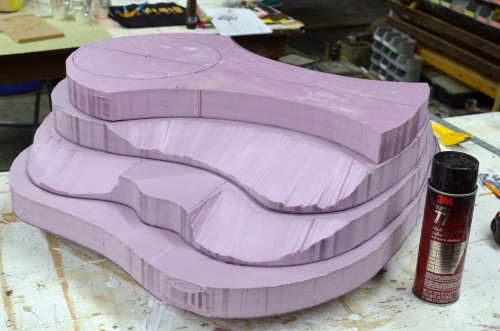
I made this one from a stack of insulation foam sheets. I cut their outlines and did some beveling with the hot wire cutter before attaching them together. This helped establish the proportions and maintain some symmetry.
Someone in the shop told me that Spray 77 would work well to stick them together. I thought it would eat into the foam, but I was surprised when I tried it. It attacked the foam a little bit, but it made a pretty strong bond.
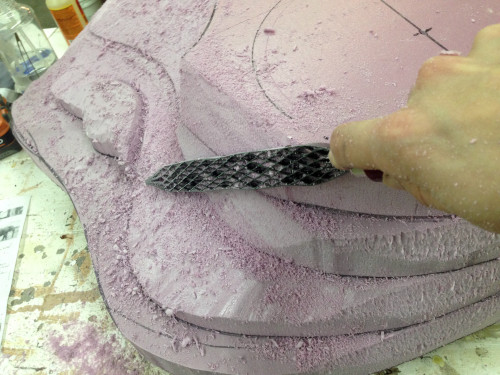
I began shaping the foam with a mix of snap-blade knives and surform tools. I also tried out one of my newer purchases, a saw file rasp. It is made up of a bunch of criss-crossing saw blades, making it very aggressive in removing material. It is completely open, though, so all the foam passes right through rather than clogging it up. Very nice.

The finished foam piece may look a little funny, but that is because it doesn’t have a trunk or tusks. The trunk was going to be a piece of silk which the actors can manipulate, and the tusks would be separate pieces of Wonderflex. This piece of foam was now ready to use to make Wonderflex shells for the head.
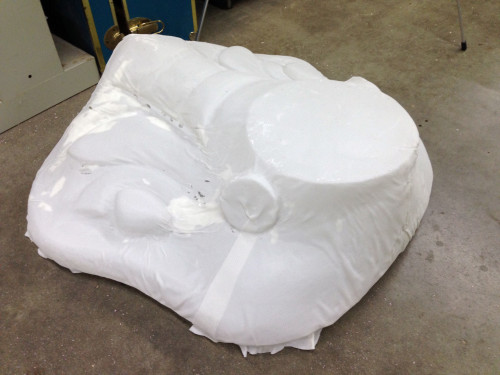
I covered the foam piece in aluminum foil so the Wonderflex would not stick to the foam. I’ve tried other methods, like coating the foam in plaster or using Vaseline as a mold release, but the aluminum foil is so much faster and easier. The Wonderflex does not pick up enough detail for the texture of the aluminum foil to show, and it peels off the back of the Wonderflex piece pretty easily.
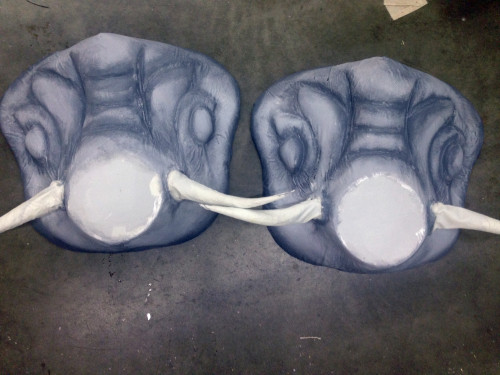
I had a set of bull horns in stock which I used as a form to make the tusks out of Wonderflex.
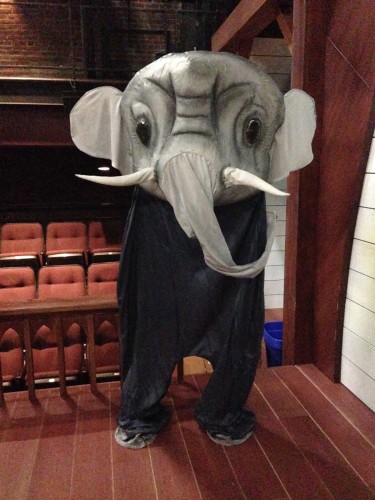
My assistant Lisa made the ears, trunks, and legs out of China silk. During the performance, the elephants flew down on a line from the catwalks and hung there. The actors could grab a stick that was attached to their trunk to make the trunk dance around.

